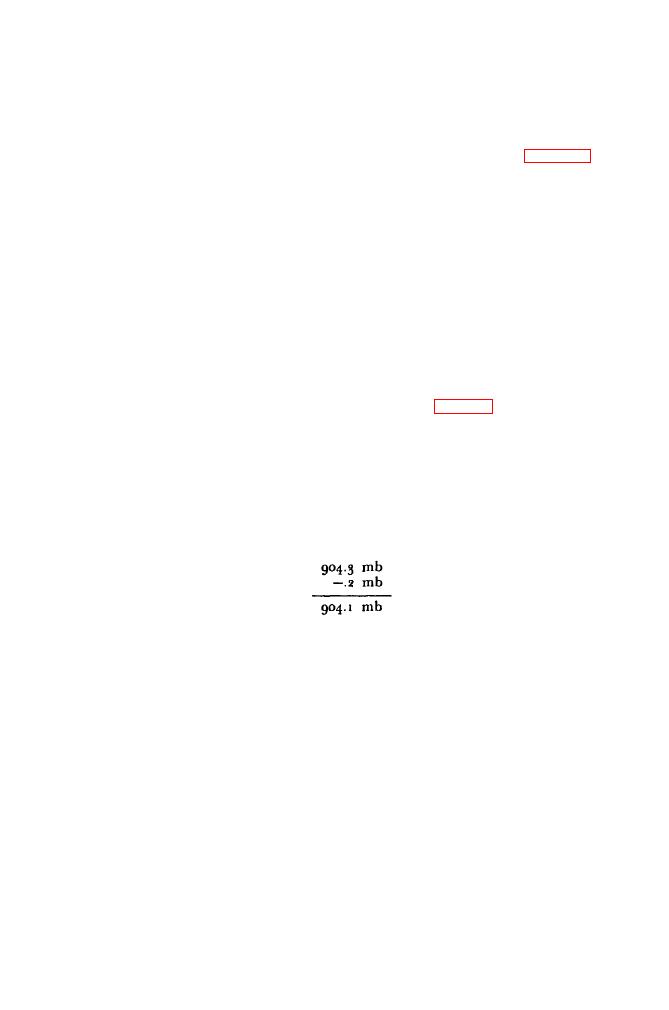
since the scale of these barometers cannot be read with greater accu-
racy than that. Ordinarily, for temperatures within 20 of 75 F., the
correction will not exceed one-tent millibar.
(2) A temperature correction curve showing the difference in cali-
bration due to temperature is determined for each instrument indi-
vidually and is plotted on a graph inside the lid of the case. Figure 6
is an example of such a correction curve,
(3) To correct the observed reading for temperature:
(a) Locate the indicated pressure on the horizontal scale of this
graph. Note the point on the red correction curve which is vertically
above or below this pressure value.
(b) Read the value of the correction to be applied per degree
Fahrenheit (above or below 7 5 F.,) from the point on the vertical
scale of the graph, corresponding to the point on the red curve.
(c) Determine the difference between the existing temperature and
7 5 F.
(d) Multiply the correction (found in b above) by this difference.
(e) Add or subtract this value from the observed reading as directed
on the calibration chart.
(4) Example: Assume that the indicated pressure is 904.3 mb and
the temperature is 1 0 F.
(a) Using the the reduction of the chart in figure 6, find the indi-
cated pressure on the horizontal scale. Move up vertically until the
pressure line intersects the temperature curve.
(b) The correction for this pressure is -0 . 0 03 mb per degree F.
(The correction is estimated to the nearest 0.001 mb.)
(c) A temperature of 1 0 F. is 65 below 7 5 F. Therefore, the
correction, -0 .0 03, is multiplied by 65 , giving a correction of -0 .1 9 5
mb.
(d) Since the reading is taken only to the nearest tenth millibar,
the correction becomes -0.2 mb. Therefore, the corrected pressure is
(5) This pressure, as read on the dial of the barometer, when
corrected for temperature, is the station pressure.
c. Conversion to Inches. (1) To convert a reading in millibars to
inches of mercury, use the conversion chart inside the lid of the case.
(2) Locate the pressure reading (which has been corrected for
temperature) on the conversion chart and simply read off the cor-
responding value in inches of mercury.
(3) Example: For a corrected pressure reading of 90 4 .1 mb, the
corresponding pressure m inches of mercury is 26 .700 in.
d. Determining approximate differences in elevation, Barometers
M L -102 -D and ML-316 /TM may be used for determining approxi-
mate differences in elevation in a manner similar to that used with
Barometer ML- 102-E. In the following method only one barometer
is used. The use of a psychrometer is also necessary, since humidity
is a factor to be considered.
(1) Take the pressure reading at the station of lower elevation.
13



 Previous Page
Previous Page
